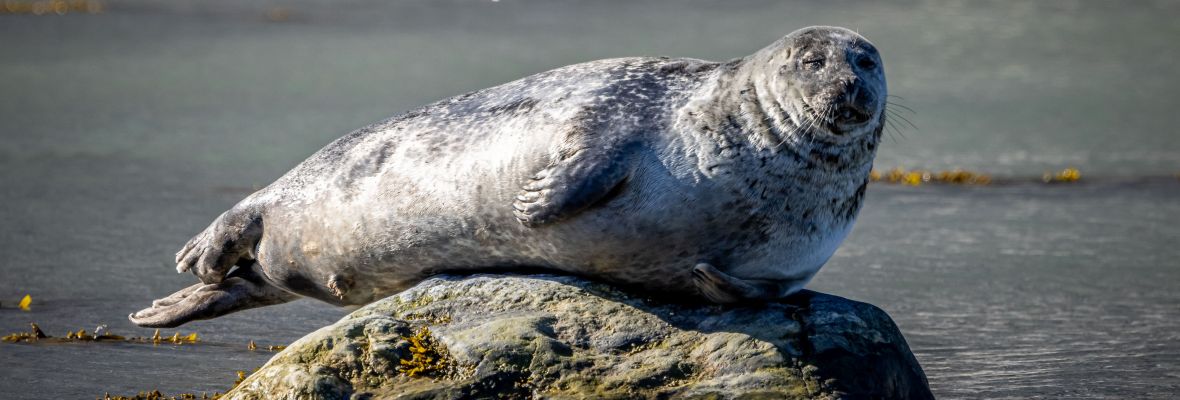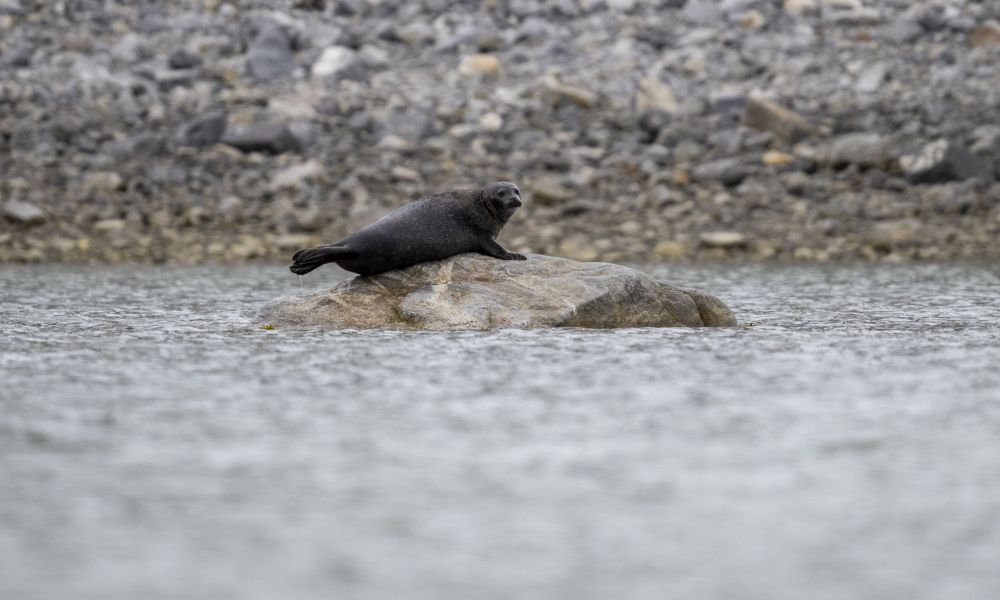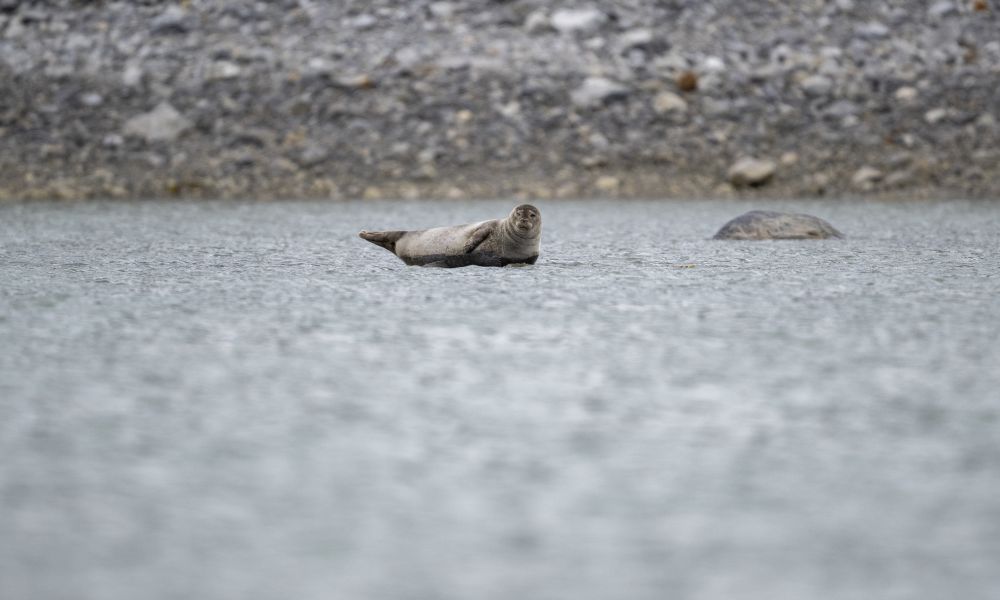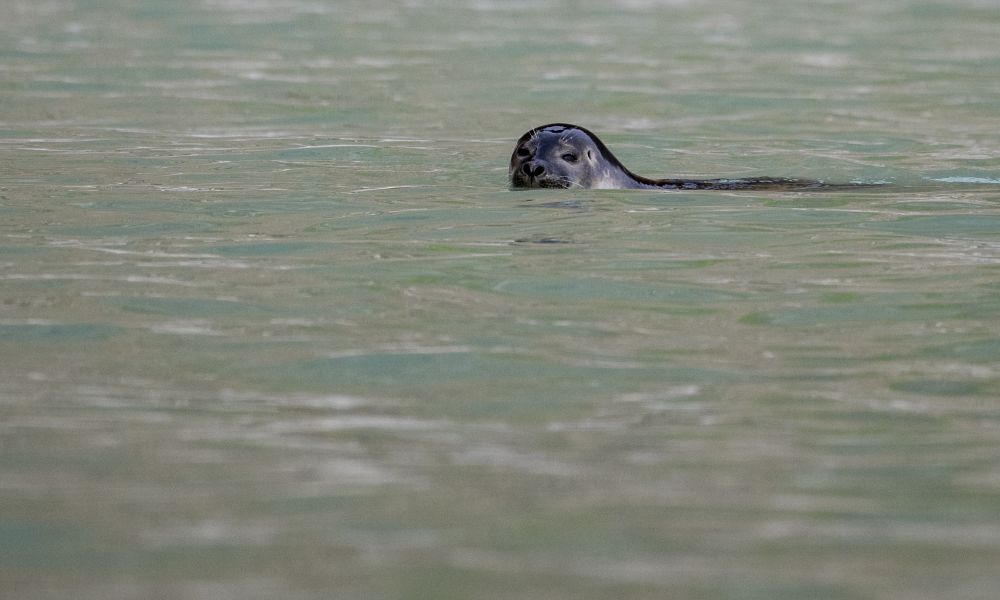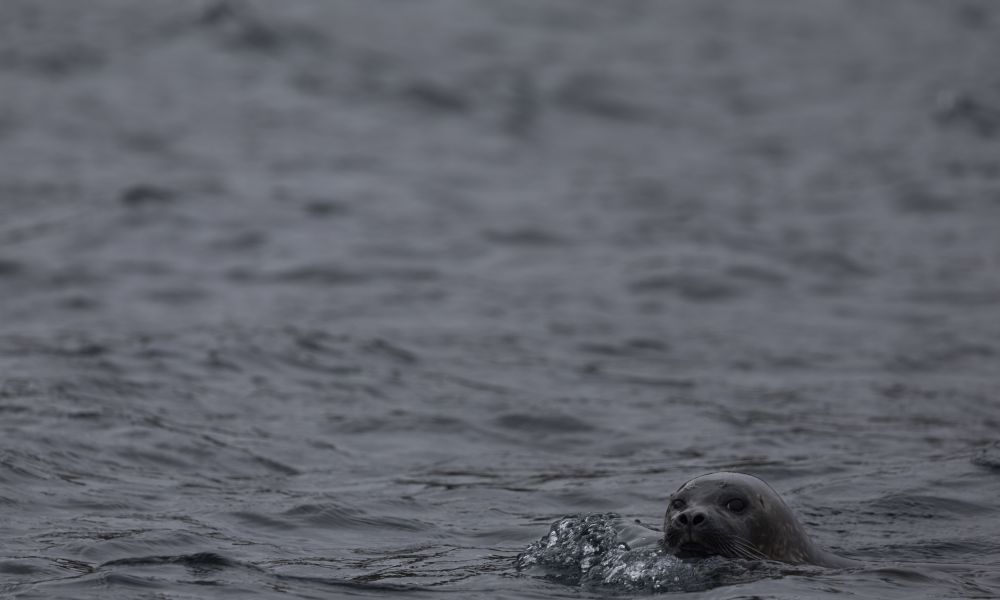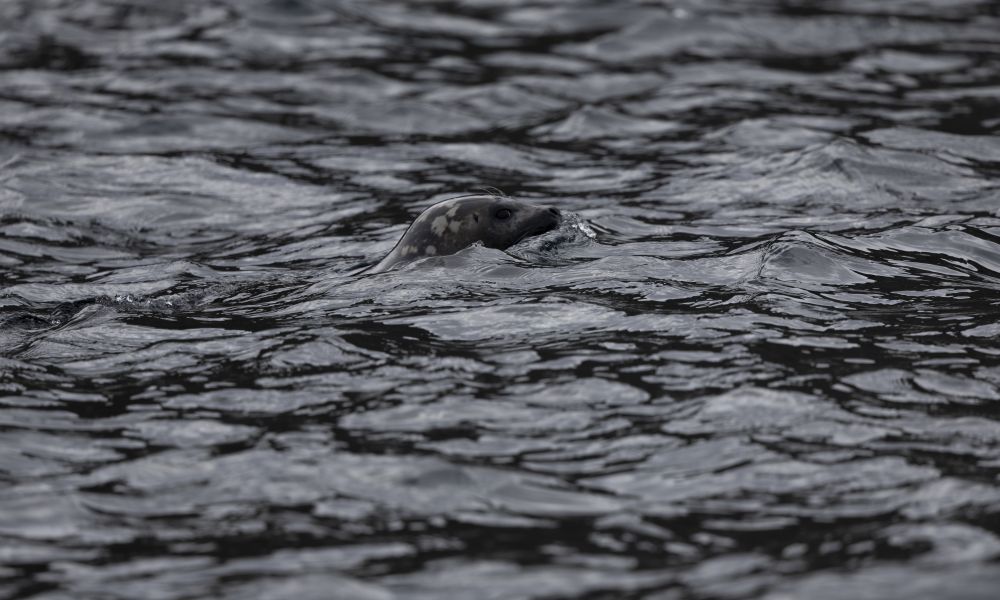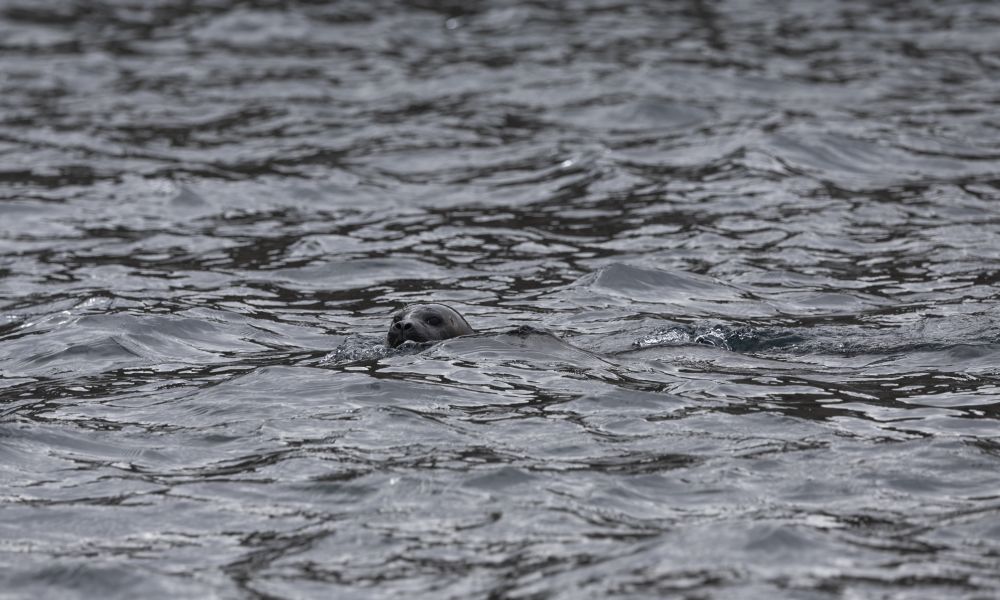How big is a ringed seal?
Adult ringed seals typically measure between 1.1 and 1.6 metres in length and have an average weight of 100 kg, with males being slightly larger than females. Ringed seal pups are approximately 60 centimetres long at birth.
What does a ringed seal eat?
The ringed seal’s diet is primarily based on various fish, supplemented with crustaceans and squid. As it hunts in total darkness for a large part of the year, ringed seals have developed hyper-sensitive whiskers that can sense even weak currents in the water created by the fish it hunts.
What does a ringed seal look like?
Ringed seals are known for their patterned coat. The mature male-ringed seal back is typically dark grey or brownish and adorned with bright rings that give the species its unique name. In contrast, their belly is lighter in colour. As for the ringed seal baby, it has soft white fur that soon gives way to a silver-grey coat.
Where does the ringed seal live?
As true denizens of the North, the ringed seal habitat is primarily in the Arctic and sub-Arctic regions. Ringed seals depend on sea ice for survival, using it to create and maintain breathing holes and snow caves where they shelter. They reside on the permanent ice, remaining as the last and northernmost of all animals when the sea ice closes. Although ringed seals are not visible in the coldest months, polar bears can smell them and break into their holes to hunt. As the only mammal seen at the North Pole, the ringed seal occupies open water behind an icebreaker.
Are there different types of ringed seals?
While the most common is the classic arctic ringed seal of icy seas, there is also the rare Saimaa ringed seal, which inhabits the freshwater Lake Saimaa in Finland. This unique variant is critically endangered, with an estimated population of around 500 individuals. In all these regions, adapting to extreme cold and maintaining access to essential breathing holes is key, especially given the threat from ringed seal predators like polar bears, walruses, killer whales and arctic foxes.



